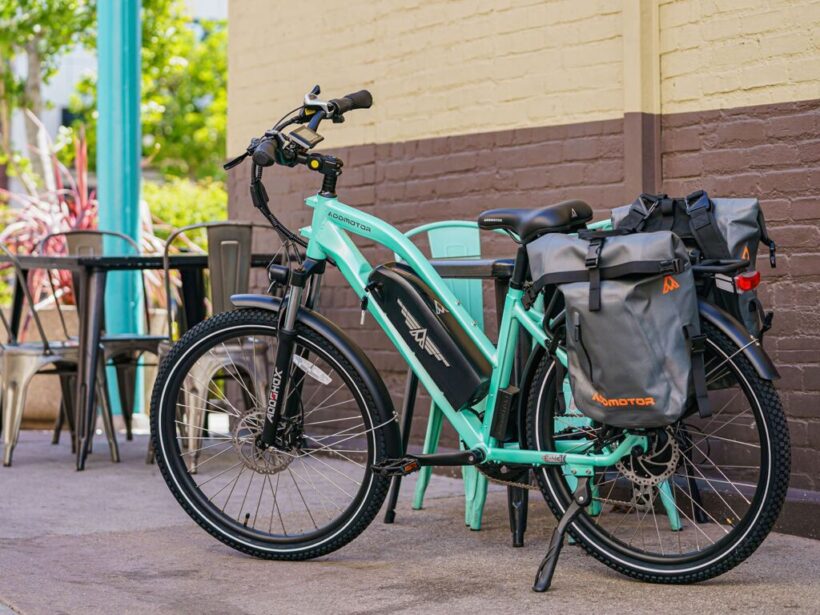Ebike battery feels like a simple construction. However, they are a complex piece of technology and must be handled with care. The careless handling of electric bike batteries can lead to serious safety issues, including fire hazards. Here’s a look at the do’s and don’ts related to e-bike battery safety.
E-Bike Batteries Explained
E-bike batteries are rechargeable lithium-ion or lead-acid batteries that power the motor of an electric bike. As technology has advanced, so have e-bike battery types and sizes, enabling a longer range and higher performance for e-bikes.
These batteries are usually placed alongside the rear wheel of an electric bike, but some models have them mounted on the frame. The type and size of battery used varies depending on the model and manufacturer. The most common types are 48V lead-acid batteries and 36V lithium-ion batteries.
Most of ebike batteries are removable, which is quite convenient as they are more easily replaced than when they’re permanently installed on the frame. This also allows riders to take their battery with them in order to recharge it and prevent it from theft, usually at home or a public charging station.
It’s often recommended that riders take a 48v battery e-bike out of the electric bike when leaving the vehicle outside. This has two common reasons. Firstly, there are many cases of stealing batteries and, secondly, it is a general best practice to avoid any fire hazards.
What Can Be the Dangers of 48 Volt Battery for Ebike?
When handled improperly, electric bike batteries can be a fire hazard. This is especially true for lithium-ion batteries as they are highly combustible and, if exposed to intense heat or short-circuiting, can explode or catch fire.
Another danger of e-bikes with removable batteries is that riders may attempt to charge them with the wrong charger. This can lead to an overload in the battery and cause it to overheat, resulting in fire hazards as well.
Moreover, wet or damaged batteries can also be risky. Water or other liquids on the electric bike’s batteries have a higher chance of short-circuiting and creating a spark that could lead to a fire. Therefore, it is important to keep the battery in safe, dry conditions and ensure that all connections are properly tightened at all times.
Batteries Should Have UL Certification
It is essential to look for products with UL (Underwriter’s Laboratories) certification when purchasing an e-bike battery. Batteries that are UL certified are deemed safe, meaning they will not catch fire or suffer from an electric shock. This is a very important safety measure and should be taken seriously by all riders when looking to purchase or replace their e-bike battery.
You can be sure that a 48v battery e-bike is UL-certified if it features the UL logo on its label. It is important to note that not all batteries are certified, so it is best to always check before buying.
Do’s and Don’ts of Ebike Battery Safety
The general rules of safety apply when it comes to electric bike batteries. Always charge the battery according to the manufacturer’s instructions and never leave it charging overnight or unattended. Furthermore, store the battery in a cool, dry place away from direct sunlight.
Let’s go through more details.
Use the Right Battery Charger
It is essential to purchasing the right battery charger for your electric bike. This means selecting a charger that matches the voltage and type of battery used in your ebike.
Sometimes you may even purchase a battery charger that is slightly bigger than necessary, as this can help extend the life of your battery. However, it’s important to never use a charger larger than the recommended size, as this could cause an overload and fire hazards.
Avoid Overcharging
It is also important to avoid overcharging your battery. This means that when you plug in the charger, it should be disconnected as soon as the battery is fully charged or at least after a few hours.
If the charger remains plugged in for too long, this can cause an overload and result in fire hazards. Therefore, only charge the battery when you need to and never leave it plugged in for extended periods of time.
Follow the Manufacturers’ Instructions
When in doubt, always refer to the manufacturer’s instructions. This will provide you with all the information you need on how to charge and store your battery safely. Don’t overlook the importance of these guidelines as they are there to protect you and your electric bike.
Store Your Ebike Battery Properly
It is important to store your electric bike battery in a safe and secure location, especially when not in use. Never store them in damp or hot areas, as this can damage the cells within the battery and cause it to overheat.
When storing your battery, always place it on a flat surface so that nothing can fall onto it and cause a spark. Also, make sure to keep the battery away from areas with high temperatures, as this could damage the cells and lead to an overload.
Do Not Open Repair the Battery
Lastly, never try to repair the battery on your own. This can be very dangerous and should only be done by a qualified electric bike technician. Trying to open or repair the battery yourself could lead to short-circuiting and cause fire hazards in the process.
Conclusion
At first glance, you may think that electric bike battery safety is not a concern. However, taking the necessary precautions can help protect you and your e-bike from potential hazards.
There are many cases when an electric bike battery can catch fire or cause serious injury if not handled properly. Therefore, it is essential to always follow the manufacturer’s instructions and use the correct charger when charging your e-bike battery.
So, be very cautious and always take the necessary steps to ensure your battery is being used and stored correctly. This will help keep you and your electric bike safe!
Also read: 5 Ways E-Bikes Can Be Used In Place Of A Car




